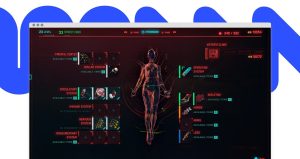UX Development for a Gaming Platform: Key Features That Define the Experience
Introduction In the gaming industry, user experience (UX) is more than just design. It’s the link between gameplay and player engagement. Whether it’s a mobile app...

Introduction
In the gaming industry, user experience (UX) is more than just design. It’s the link between gameplay and player engagement. Whether it’s a mobile app, a console interface, or a PC gaming platform, UX design determines how players interact with the game, how they feel, and how they engage with it. A high-quality gaming UX combines performance, aesthetics, and accessibility, ensuring user immersion rather than frustration.
At InStandart, we know that designing intuitive and enjoyable interfaces for gaming platforms requires precision, creativity, and deep user understanding. Let’s explore the UX development for a gaming platform key features that make a gaming truly exceptional.
1. Seamless Onboarding
First impressions matter. The onboarding process should familiarize players with game mechanics, features, and navigation without overwhelming them.
An effective onboarding process includes step-by-step tutorials, interactive prompts, and guided scenarios that adapt to the player’s skill level. The goal is to help users feel confident and engaged, not confused or limited.
For example, instead of text-heavy instructions, a smooth onboarding process can be achieved by using animation or visual cues to guide players through the platform naturally.
2. Intuitive Navigation and Layout
Gamers want instant access to their favorite features – whether it’s starting a match, joining friends, or checking achievements.
Successful game UX design emphasizes intuitive navigation. This means a predictable menu structure, minimal clicks, and clear labels. It should also support seamless navigation using a controller, mouse, or touchscreen, depending on the platform.
When design gets out of the way, gameplay comes to the forefront – just the way it should be.
3. Performance and Responsiveness
UX isn’t just about the visuals; it’s also about how quickly and reliably the interface responds. Delays, lags, or slow loading screens can quickly turn excitement into frustration.
A well-optimized gaming platform focuses on:
- Low latency response to player actions
- Fast loading on all devices
- Stable performance even under heavy load
Performance testing and UX optimization go hand in hand, ensuring a smooth and uninterrupted gaming experience.

4. Personalized User Experience
Personalization has become a defining feature of modern gaming user experience (UX). Players expect interfaces that adapt to their preferences – from themes and difficulty levels to recommendations based on their past activity.
By integrating data-driven UX design, gaming platforms can offer content, events, or skins tailored to each user’s habits. This creates a more engaging and enjoyable gaming experience that keeps players coming back again and again.
5. Immersive Visual and Audio Design
UX for gaming platforms is closely tied to sensory perception. Every button press, sound effect, or visual transition contributes to immersion.
Great UX design focuses on visual clarity, a consistent style, and harmonious auditory feedback. A responsive sound cue or subtle animation can subconsciously enhance enjoyment and control of the game.
At InStandart, we strive to create interfaces that feel alive – interfaces that respond to the player’s actions and mood.
6. Accessibility and Inclusivity
The best gaming platforms are designed for everyone. Accessibility features such as color contrast adjustments, text-to-speech, customizable controls, and subtitles ensure that players with disabilities can fully enjoy the gaming experience.
Inclusive UX design also considers different cultural backgrounds, age groups, and experience levels. By providing equal opportunities for all users to participate, developers strengthen both brand reputation and player loyalty.

7. Social and Community Integration
Modern gamers crave connection. That’s why social integration is now a key part of gaming UX. Features like friends lists, chat systems, multiplayer lobbies, and achievement sharing increase player engagement and retention. When designed well, these tools create a sense of belonging, transforming a single-player experience into a thriving community.
8. Feedback and Continuous Improvement
UX design doesn’t end with launch. Continuous testing, feedback, and behavioral analytics are crucial to developing the gaming experience.
A well-designed gaming platform utilizes A/B testing, player surveys, and data analysis to gradually refine features. This constant iteration ensures the platform remains relevant and competitive in a rapidly changing market.

Conclusion
In the world of gaming, UX is the core of engagement. From the moment a player logs in to the moment they log out, every interaction matters. A well-designed UX creates a seamless gameplay experience, emotional connection, and lasting enjoyment.
At InStandart, we create user interfaces that not only look great but are also intuitive, responsive, and player-focused. Whether developing a new gaming platform or optimizing an existing one, our team strives to combine design innovation with technical precision to make the gaming experience more immersive than ever.